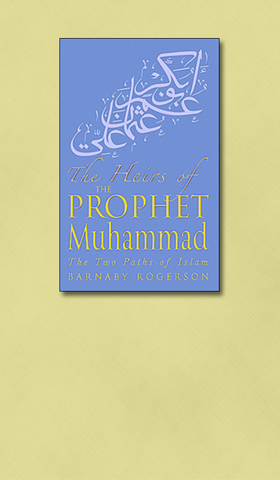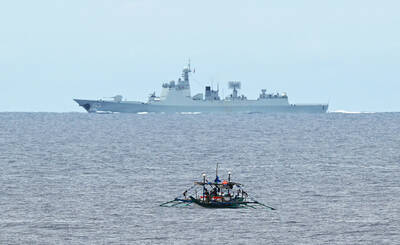On the morning of his death, the Prophet Mohammed unexpectedly appeared before his followers in the city of Medina as they gathered for prayers in the makeshift mosque that also served as his home. No one had seen him for some time. Rumors were swirling around the city about his ill health. The Messenger of God was dying, people said, perhaps already dead. So when he suddenly turned up on that sunny morning in 632 AD, looking stout and rosy, the anxiety about his health gave way to shouts of jubilation. A few hours later, when the prayers had ended and the congregation had dispersed, Mohammed slipped back to his room, closed his eyes and quietly breathed his last.
As news of Mohammed's death spread through Medina, the elation that had accompanied his appearance at the mosque quickly transformed into raw panic. Mohammed had done nothing to prepare his followers for his demise. He had made no official statement about who should replace him, nor had he put into place the mechanism by which a leader could be chosen. It was as though the possibility of his death had not occurred to him.
Meanwhile, the Muslim community was growing faster than anyone could have imagined and was on the verge of splintering into competing sects. For more than a decade, all that had kept the community unified was the sheer magnitude of Mohammed's charisma.

With his death, the internecine power struggles that had been simmering for years among the Muslim leadership suddenly came to a boil. Indeed, Muhammad's corpse had yet to be washed before a row flared up among his friends, family and earliest followers over which of them should take his place at the head of the community.
What began on that somber morning as a simple argument over succession was to erupt into a bloody civil war that permanently fractured the Muslim community into rival religious and political factions, whose quarrels would reverberate throughout the Muslim world to this day.
It is at this pivotal moment in history that Barnaby Rogerson picks up the story of Islam. Essentially the sequel to his acclaimed biography of the prophet, Rogerson's new book follows the reigns of Mohammed's first four successors, or caliphs: the zealously loyal early convert to Islam, Abu Bakr; the deeply pious though unapologetically misogynistic warrior, Umar; the kindly yet politically inept septuagenarian, Uthman; and Ali, the Prophet's beloved nephew and son-in-law, the man whose partisans (the Shiatu Ali) would one day launch a wholly new sect in Islam -- the Shiite [Shia].
Together, these so-called Rightly Guided Caliphs ushered in a time that most Muslims regard as the golden era of Islam, a period in which the small community of faith that Mohammed left behind blossomed into a vast empire stretching from the Indian subcontinent to North Africa. What Rogerson's astute scholarship and detailed narrative shows is that this period in Islamic history was in reality far from a golden era.
To begin with, Mohammed's death unleashed deep-seated tensions that had existed for years over issues as diverse as how to divide tax revenues equitably to what it even meant to be a Muslim. Rogerson deals adroitly with these internal conflicts, delving into the intricate sociopolitical composition of ancient Arab society with the skill of a historian and the flair of a novelist (though, remarkably, he is neither).
This is no dry history, but an absorbing narrative, full of action and intrigue, with historical figures so complex in their motivations and compelling in their characterization that they leap off the page.
Rogerson's principal profession is as a writer of guidebooks, an experience he puts to use in The Heirs of the Prophet Muhammad. It is clear that this is a writer who has trekked through the landscapes he describes, who has tasted the hot winds as they sweep off the sand dunes and witnessed for himself the otherworldly glow of the desert sun as it hovers just above the horizon.
Unfortunately, the same attention to detail that brings the
Arabian landscape to life becomes tedious as Rogerson's focus switches from the internal tensions of the Muslim community to the external threats faced during its expansion into the previously impenetrable borders of central Asia and western Europe.
Empires often rise and fall on the field of battle, but Rogerson's exhaustive depiction of nearly every skirmish fought by the Muslim armies in their first 50 years slows the narrative to a crawl. He would have better served his narrative if he had painted Islam's wars of expansion with broad strokes rather than such a fine brush.
On the other hand, he could have paid more attention to what the book's subtitle promises will be a discussion of "the roots of the Sunni-Shia [Shiite] schism."
Much has been written about this topic since the occupation of Iraq launched a civil war between the two sects the like of which has not been seen in 1,400 years.
But neither the theological nor, for that matter, the political origins of this conflict are very deeply mined in Rogerson's text. Instead, he simply recounts the stories he has culled from the traditional histories of this tumultuous period and allows the reader to draw his or her own conclusions as to how and why the unified Muslim community so suddenly split upon the death of Mohammed into Sunni and Shiite sects.

Late last month Philippines Foreign Affairs Secretary Theresa Lazaro told the Philippine Senate that the nation has sufficient funds to evacuate the nearly 170,000 Filipino residents in Taiwan, 84 percent of whom are migrant workers, in the event of war. Agencies have been exploring evacuation scenarios since early this year, she said. She also observed that since the Philippines has only limited ships, the government is consulting security agencies for alternatives. Filipinos are a distant third in overall migrant worker population. Indonesia has over 248,000 workers, followed by roughly 240,000 Vietnamese. It should be noted that there are another 170,000

Hannah Liao (廖宸萱) recalls the harassment she experienced on dating apps, an experience that left her frightened and disgusted. “I’ve tried some voice-based dating apps,” the 30-year-old says. “Right away, some guys would say things like, ‘Wanna talk dirty?’ or ‘Wanna suck my d**k?’” she says. Liao’s story is not unique. Ministry of Health and Welfare statistics show a more than 50 percent rise in sexual assault cases related to online encounters over the past five years. In 2023 alone, women comprised 7,698 of the 9,413 reported victims. Faced with a dating landscape that can feel more predatory than promising, many in

“This is one of those rare bits of TikTok fitness advice with a lot of truth behind it,” says Bethan Crouse, performance nutritionist at Loughborough University. “Sometimes it’s taken a bit too literally, though! You see people chugging protein drinks as they’re scanning out of their gym.” Crouse recommends the athletes she works with consume 20-30g of protein within 30-60 minutes of finishing a resistance training session. “The act of exercising our muscles increases the breakdown of muscle proteins,” she says. “In order to restore, or hopefully improve them — and get gains such as increased muscle mass or strength —

“Far from being a rock or island … it turns out that the best metaphor to describe the human body is ‘sponge.’ We’re permeable,” write Rick Smith and Bruce Lourie in their book Slow Death By Rubber Duck: The Secret Danger of Everyday Things. While the permeability of our cells is key to being alive, it also means we absorb more potentially harmful substances than we realize. Studies have found a number of chemical residues in human breast milk, urine and water systems. Many of them are endocrine disruptors, which can interfere with the body’s natural hormones. “They can mimic, block